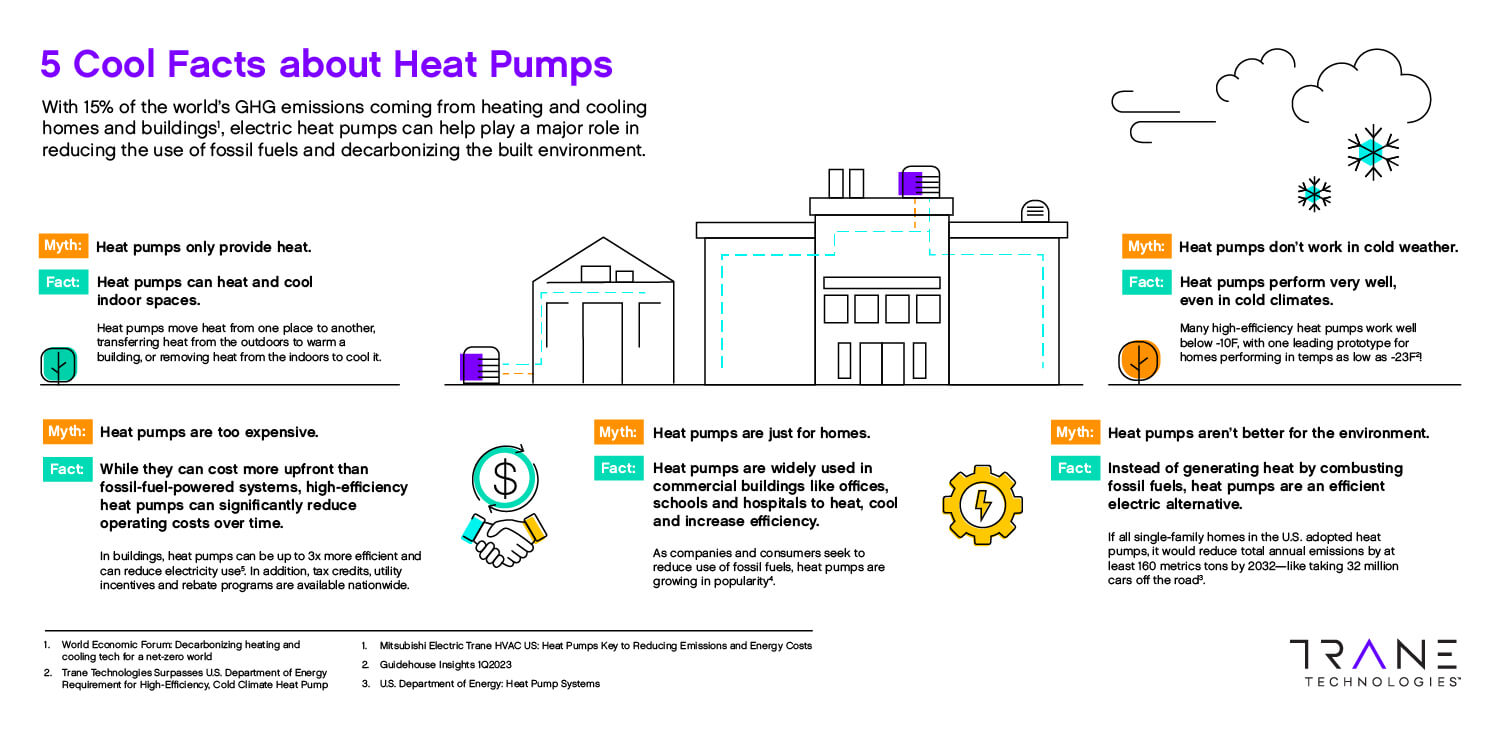
Our EnvironmentArticle
Ask the Engineer: Three Priorities for More Sustainable Living
July 10, 2023
A top engineer shares her perspective on the role of homes in leading more sustainable lives.

Our EnvironmentArticle
July 10, 2023
A top engineer shares her perspective on the role of homes in leading more sustainable lives.
Challenging what’s possible means empowering experts and innovators to lead by example and share their expertise with others.
We asked one engineer about their vision of sustainable living—as an engineer and a homeowner—and here is what she shared:
In the residential HVAC business, we are focused on creating a vision of sustainable living for people in their homes. To make this vision a reality, we're working on three key areas that can revolutionize how we heat and cool our homes, especially if these advancements are widely adopted:
A heat pump is a climate control system designed to efficiently heat and cool buildings. Heat pumps have been around for quite some time. We started developing and improving this technology back in the 1960s. But many people still don't fully understand how they work and the fact that they can both heat and cool spaces.
Let's clear up some misconceptions. Despite their name, heat pumps can provide both heating and cooling for a space. They operate by transferring heat from one place to another, rather than generating heat themselves. This means they can extract heat from the outdoor air, even in freezing temperatures, and bring it inside to warm up your home during the winter. But here's the interesting part: heat pumps can also work in reverse to cool your home during the summer months.
During the cooling process, the heat pump works in reverse. It extracts heat from the indoor air, turning the refrigerant into a gas, and sends it outside, where the heat is released into the outdoor air. This leaves the indoor air cooler and more comfortable.
It's important to note that heat pumps are not only efficient but also more environmentally friendly. By using electricity as the direct energy source instead of burning fossil fuels, they can help reduce carbon dioxide emissions associated with traditional heating and cooling systems. Plus, as electricity generation increasingly shifts to renewable sources, such as solar and wind power, heat pumps become even greener.
An exciting area of innovation is the development of cold climate heat pumps, with recent breakthroughs that allow cold climate heat pumps to operate efficiently even at extremely low temperatures. In a recent field trial in Idaho, our system operated effectively at -23 degrees Fahrenheit (-30.5 degrees Celsius). This innovation enables homeowners to stay warm during harsh winter conditions while minimizing their environmental impact.
We always have our eyes on the future. Our focus is on accelerating innovations that will make homes more environmentally friendly and comfortable, both now and for the long run. By improving system efficiency, using more sustainable refrigerants, and advancing the use of electric solutions, we're helping homeowners save money on energy while increasing their role in making the world a better place for future generations. It's a win-win for everyone.

With 15% of the world's greenhouse gas (GHG) emissions coming from heating and cooling homes and buildings, electric heat pumps can play a major role in reducing the use of fossil fuels and decarbonizing the built environment.
Myth: Heat pumps only provide heat.
Fact: Heat pumps can heat and cool indoor spaces.
Heat pumps move heat from one place to another, transferring heat from the outdoors to warm a building or removing heat from the indoors to cool it.
Myth: Heat pumps don't work in cold weather.
Fact: Heat pumps perform very well, even in cold climates.
Many high-efficiency heat pumps work well below -10F, with one leading prototype for homes performing in temperatures as low as -23F!
Myth: Heat pumps are too expensive.
Fact: While they can cost more upfront than fossil-fuel-powered systems, high-efficiency heat pumps can significantly reduce operating costs over time.
In buildings, heat pumps can be up to three times more efficient and can reduce electricity use. In addition, tax credits, utility incentives, and rebate programs are available nationwide.
Myth: Heat pumps are just for homes.
Fact: Heat pumps are widely used in commercial buildings like offices, schools, and hospitals to heat, cool, and increase efficiency.
As companies and consumers seek to reduce their use of fossil fuels, heat pumps are growing in popularity.
Myth: Heat pumps aren't better for the environment.
Fact: Instead of generating heat by combusting fossil fuels, heat pumps are an efficient electric alternative.
If all single-family homes in the U.S. adopted heat pumps, it would reduce total annual emissions by at least 160 metric tons by 2032—like taking 32 million cars off the road.
Recommended for you
Our Environment Article
The Power of PartnershipOctober 25, 2024
We amplify our impact on issues from global climate action to local community needs through our partnerships.
This article is co-authored by Deidra Parrish Williams, Global Corporate Citizenship Leader, Trane Technologies.
Our Environment Article
Trane Technologies Tackles Embodied Carbon at UNGA Goals HouseOctober 14, 2024
Trane Technologies VP of Sustainability Scott Tew discusses the company’s move to reduce embodied carbon at UNGA Goals House at Climate Week NYC 2024.
Our Environment Article
Leading on Embodied CarbonSeptember 23, 2024
Trane Technologies’ sustainability and procurement leaders on the company’s move to reduce embodied carbon by 40%.
This article is co-authored by Kinnar Ghiya, Vice President, Procurement, Trane Technologies.
Our Environment Article
Building a MovementJune 17, 2024
The technology exists today to decarbonize the built environment. How will we get to net-zero? Together.